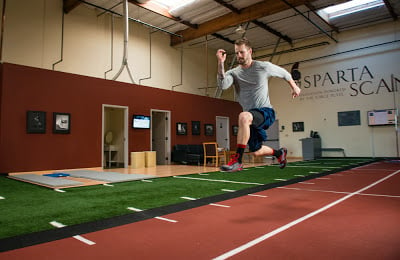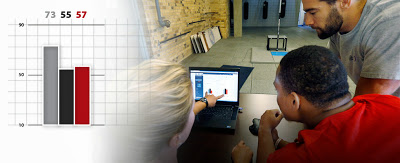
The roundtable seminar that we hosted here at Sparta several weeks ago provided the chance to “talk shop” with great coaches. One of the great conversations that resulted surrounded the nomenclature of “Flexibility”. We have recently covered our rationale behind flexibility on the Sparta blog as well as our practical steps to addressing these qualities.
Talking with other coaches was a great chance to understand their approach to the same principles. One key takeaway was that people often argue about what to call things (nomenclature), but the principles themselves are usually pretty universal. At Sparta, we spend a lot of time debating our nomenclature because it is the foundation for educating our athletes and making the message “sticky”. At the same time, we work hard to be open minded to new ideas and not get thrown off by the nomenclature that works best in someone else’s environment.

Coach Andrea Hudy from the University of Kansas has a great way of thinking about movement. She uses the nomenclature “stiffness vs. compliance” to describe many of the components that influence an athlete’s Sparta Signature.
This approach really accounts for the relationship between the variables LOAD, EXPLODE, and DRIVE in every movement. LOAD and EXPLODE require greater amounts of stiffness in order to initiate eccentric strength and bracing through the torso. DRIVE requires greater compliance to allow for full flexion and full extension during movements. As we evaluate and improve athletes’ Signatures we are really working along the continuum of stiffness vs. compliance.
Athletes with a Sparta signature that needs DRIVE benefit from prescriptions that improve compliance; the ability of the muscle to elongate and dissipate force. One of the movement metrics that we use to evaluate DRIVE is called Time to Stabilization, which is the time needed to stabilize the center of mass over the center of pressure on the foot. This metric is a key to injury prevention as it reinforces strength and body control.
We use the Broad Jump – 1 Leg Landing as a reactive strength prescription to challenge the Time to Stabilization for our athletes who need DRIVE. With this movement, we are able to get the full flexion and full extension component of DRIVE while educating athletes about the importance of Time to Stabilization during the landing. We remain focused on this metric based off an objective competency, what we call phases or levels, which in this case reflects distance.
Men
Phase 1 and 2 – 2 yards
Phase 3 and 4 – 2.5 yards
Women
Phase 1 and 2 – 1.5 yards
Level 3 and 4 – 2 yards
Load into full flexion and jump with full extension as you aim for the specified distance
Land on one leg and stick the position
The goal is to reduce Time to Stabilization and avoid extra hop steps and swaying
One of the biggest goals of our program is to increase each athletes understanding of how their body moves. This is done by having an objective system of measurement (force plate), individualizing prescriptions to meet each athletes needs (Sparta Signature), and using “sticky” nomenclature to clarify the goal of everything that we do. These steps all build ownership for the athlete, which is the foundation for results.